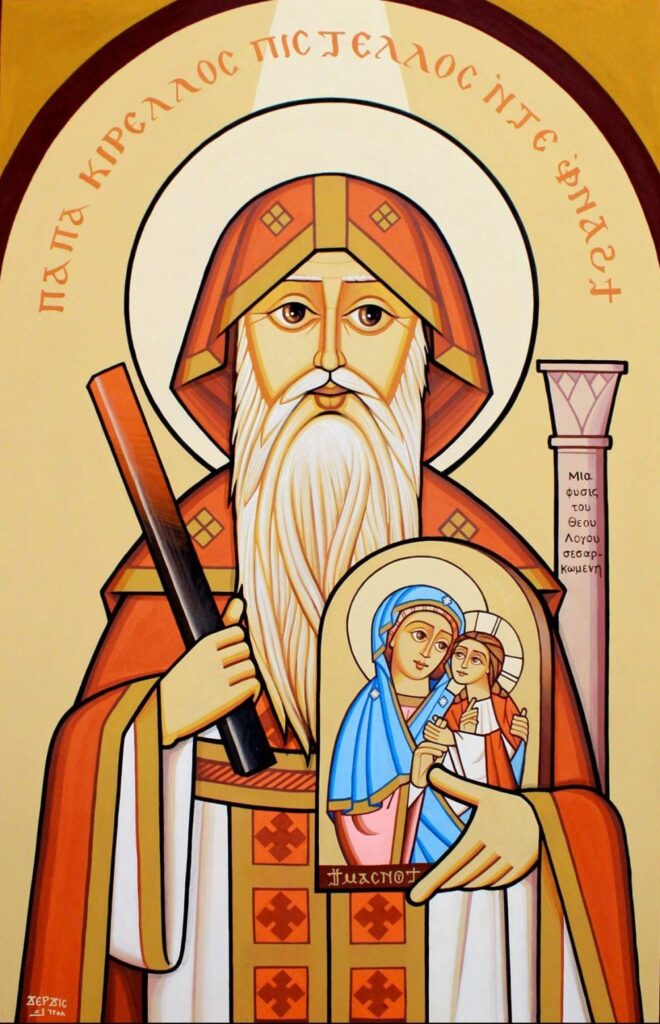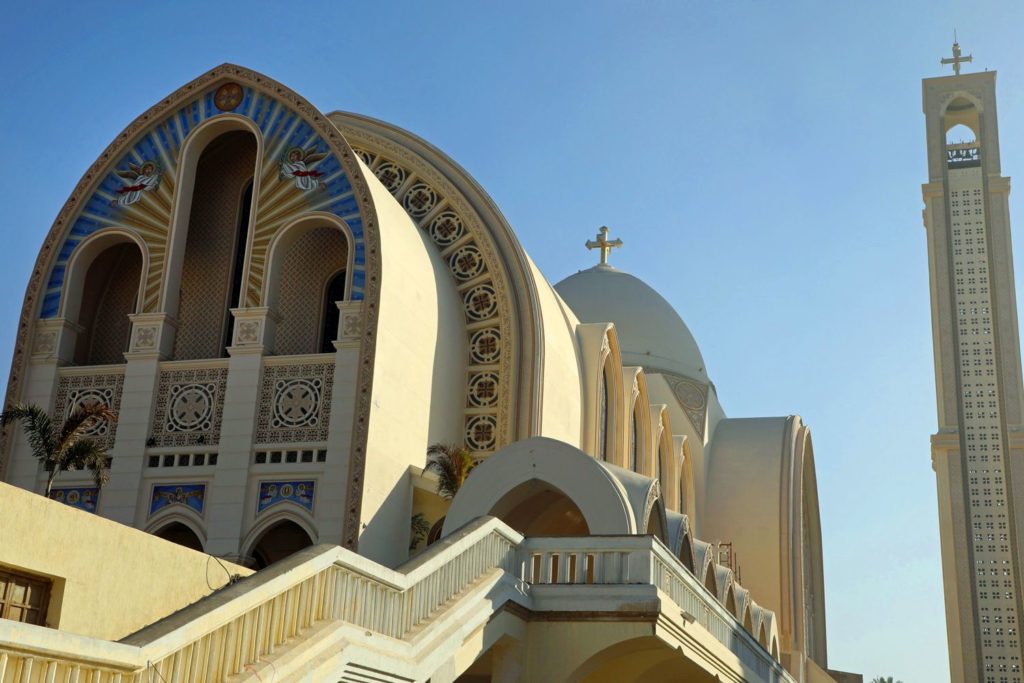
The Coptic Orthodox Church is one of the oldest Churches in Christianity. But what does “Coptic” mean? Simply “Egyptian.” This term began to assert itself in the Islamic era. Yet, its ancient name is Hi-ka-ptah meaning “the abode of the Ka [vital principle] of Ptah,” which has its origin stems from one of the sacred names of the city of Memphis, the capital of the ancient kingdom (from 2700 BC to 2200 BC) which is located a few kilometers from the present Cairo. From this name developed the Greek title Aigyptos, and eventually, the Western name “Egypt.” When Arab Muslims invaded Egypt in the seventh century, the word crippled in Arabic as “qibt” indicated only an ethnic origin, “the Egyptian.” But it was soon conflated and closely associated with the “Christians” since they were the majority population. Today “Copt” or “Coptic” points to both a religious and an ethnic datum, that is “Egypt’s Christian.” Also, the term “Coptic” is designated as the language, the art and civilization of Egypt from the end of the Ptolemaic era in circa 30 BC. It is no accident that deeply Egyptian and rooted in their territory culture, Copts consider themselves descendants of the ancient Egyptians and custodians of their culture.
Egypt as a Biblical Land
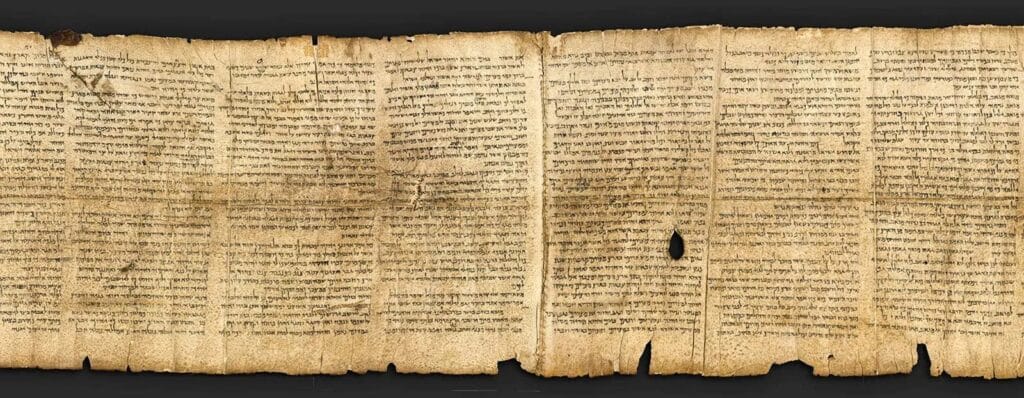
In the beginning was Egypt. A mysterious land, well present in the history of salvation since Egypt was linked to the fate of the people of Israel. “Egypt” appears in the NJKV translation 612 times! Many of the characters of the Old Testament come from. It was the land of refuge for Abraham, Isaac and Jacob and, to the opposite pole, a land of slavery for Joseph and Moses. Moses himself, before becoming the head and symbol of the people of Israel, was trained in the school of Egyptian civilization, so much so that he was described by Scripture as “learned in all the wisdom of the Egyptians” (Acts 7:22). The Jewish people, after being liberated from slavery in Egypt in a miraculous way, while still in the desert, complained to Moses of not being able to eat the juicy melons, the cucumbers, the leeks, the onions, and the garlic of Egypt (cf. Nm. 11.5)!
But Egypt in the Bible was not only the scene of others’ story. On the contrary, it has itself been the subject of many Biblical prophecies. It is enough to mention just one that the Copts have always read as a prophecy of the country’s evangelization. It is found in Isaiah 19, the so-called “oracle of Egypt,” which reads:
Behold, the LORD rides on a swift cloud, and will come into Egypt… Then the LORD will be known to Egypt, and the Egyptians will know the LORD in that day, and will make sacrifice and offering; yes, they will make a vow to the LORD and perform it…. In that day Israel will be one of three with Egypt and Assyria– a blessing in the midst of the land, whom the LORD of hosts shall bless, saying, “Blessed is Egypt My people, and Assyria the work of My hands, and Israel My inheritance.” (Isa. 19,1-25)
That Egypt that had held the Jews as slaves, becoming in the Bible a symbol of evil par excellence, will become “blessed,” and “his people.”
St. Mark, the Founder of the Church of Alexandria
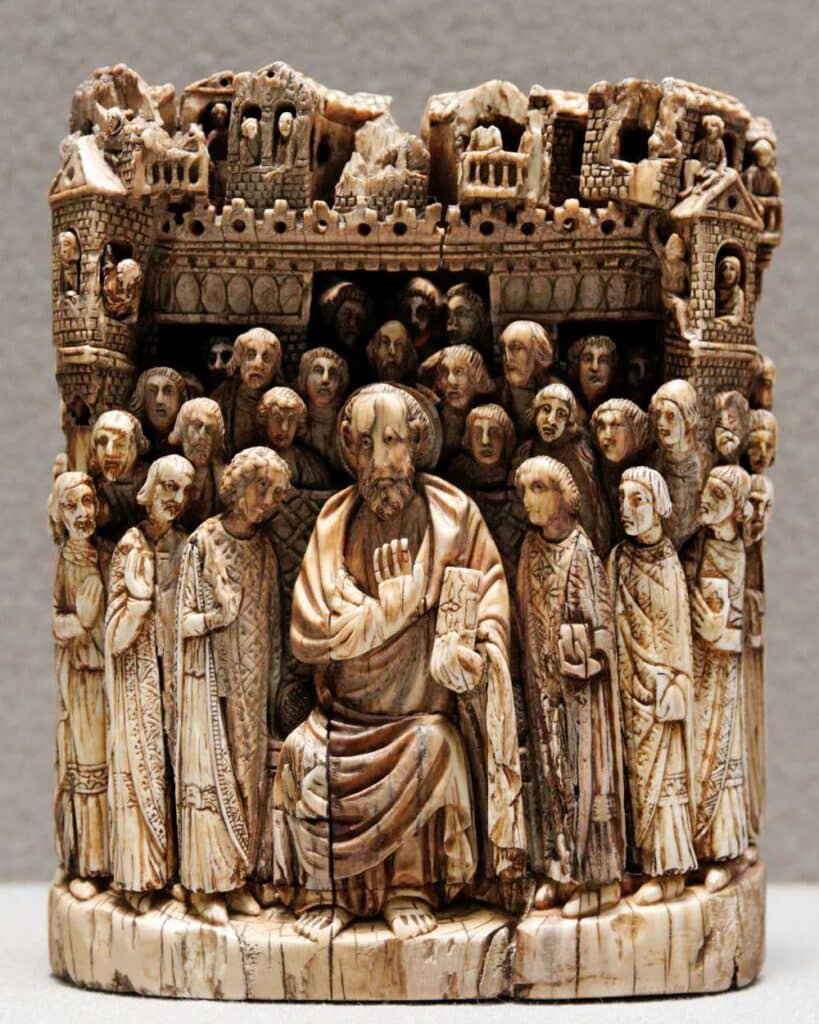
Tradition indisputably considers St. Mark, one of the seventy disciples of Christ, as the first apostolic missionary who arrived in Egypt around 43 AD.[1] Eusebius of Caesarea writes that “Mark, sent to Egypt, was the first to spread the Gospel that he composed and to establish churches in Alexandria itself.”[2] The history of the preaching of St. Mark, as described in the Copto-Arabic chronicle Tāriḫ al-Baṭārika (History of the Patriarchs), begins with the appearance of an angel in a dream to Peter, who persuaded him to preach the Gospel in Alexandria and Rome, two cities in which there was “shortage because of the ignorance of God’s Word.”[3] St. Mark accompanies Peter on his mission to Rome and then from there, St. Mark travelled to Alexandria.
At the time of St. Mark, Alexandria is a cosmopolitan and multireligious city. Center of the Hellenistic East, Alexandria was witnessing an intense cultural activity at that time. Then, there was an important Jewish community that was the protagonist of the first translation of the Old Testament into Greek, the so-called version of the Seventy or Septuagint, completed between the third and first centuries BC. In Alexandria, Philo, one of the Jews of Alexandria, in an attempt to reconcile Hellenism and Judaism, develops a biblical exegesis that prefers an allegorical and mystical interpretation over the literal one. This exegetical method would greatly influence the Didaskaleion, the first “university” of Christian theology, founded in Alexandria towards the end of the second century AD, which had a huge impact on all of Christianity. Precisely because of the Didaskaleion, it has been said that “the first systematic attempt to harmonize the tradition of the faith with the free conclusions of the human intellect was not made in Rome, nor in Athens, but in Egypt”[4] and that “Alexandria became the brain of Christianity.”[5]
Small Christian house-church communities already existed when St. Mark arrived in Alexandria. We know from the Acts of the Apostles that on the very day of Pentecost Sunday, therefore a few years before the arrival of Mark, some Egyptian Jews (cf. Acts 2:10) witnessed the descent of the Holy Spirit on the Apostles. The Acts also tell us about Apollo, an intellectual Jew of Alexandria of Egypt, who was among the first to fervently welcome the Christian faith.
Now a certain Jew named Apollos, born at Alexandria, an eloquent man and mighty in the Scriptures, came to Ephesus. This man had been instructed in the way of the Lord; and being fervent in spirit, he spoke and taught accurately the things of the Lord, though he knew only the baptism of John (Acts 18: 24-25).
It is probable, therefore, that St. Mark’s work was to organize the community around his episcopate and the numerous priests he ordered for the pastoral care of the Church. After a few years spent in Alexandria, St. Mark goes to Cyrenaica (approx. 50-60 AD), passing through the Mediterranean coast, and then returns again to Alexandria in 61 AD. Here, he saw the development of the communities he had founded twenty years earlier. According to Eusebius of Caesarea, among the presbyters ordained by St. Mark, St. Anianus was chosen in 62 AD as bishop and successor of St. Mark in the apostolic see of Alexandria.[6] Shortly after the Apostle was martyred. Subsequently, the Patriarchs of Alexandria, ordained according to apostolic succession, would preserve up to the present day, with truth and devotion, the faith handed down to them by the oral and evangelical tradition. The Patriarch of Alexandria Heraclius (232-248) will be the first ever to receive the title of “pope,” a Coptic word (p-apa) which means “the father,” long before the title was used by the bishop of Rome.[7]
Our current Pope, Anba Tawadros II, is the 118th Pope of Alexandria and Patriarch of the see of St. Mark.
“From Egypt I Called my Son” (Hos.11:1)
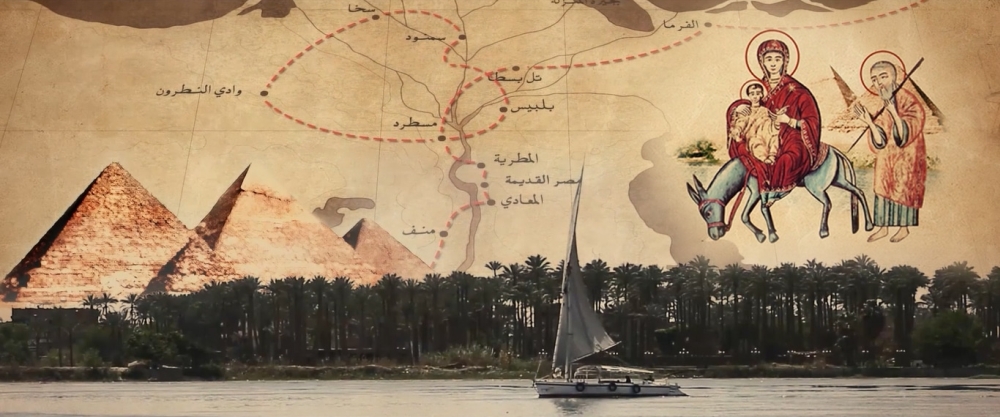
One could say that the Copts believe that the first to evangelize Egypt is not St. Mark, whom they certainly considered the “founder” of their Church, but the Lord Jesus himself. We must go back at least forty years before St. Mark when the Holy Family fled to Egypt to escape from Herod’s wrath. Here too, an Old Testament prophecy on Egypt is affirmed, “From Egypt I called my son” (Hos. 11:1). Several apocryphal texts, including the Arabic “Gospel” of Childhood (ca. 5th c.), and several Coptic traditions relate the details of the stay of Jesus, Mary and Joseph within Egypt that was full of miraculous events and led many to believe in Christ. Even today there are churches founded on the places of the most important stages of their passage in the country. Egypt is thus the only land, together with Palestine, to have been walked upon by the incarnate Word, our Lord Jesus Christ.
Are the Copts Monophysites?
Among the die-hard clichés against the Copts, there is Monophysitism. Unfortunately, many incorrectly assume the Coptic Church as a “Monophysite Church.” At the fourth Ecumenical Council, known as the Council of Chalcedon in 451, the separation between the Church of Alexandria and the other Christian apostolic sees was consummated. At the basis of this separation was officially a Christological dispute which, however, was certainly aggravated by political disputes, ethnophyletism, ecclesial jealousies and the shadows of Nestorian thought, condemned at the previous ecumenical council of Ephesus in 431.
The Monophysite label given to Copts for centuries has effectively branded them as heretics by associating them to the heresy of Eutyches (378-456), a monk from Constantinople who was anathematized at the Ecumenical Council of Chalcedon in 451 because he compared the humanity of Christ to a drop of wine in an ocean of water (i.e. his divinity). It would at the least be surprising that the Church which generated St. Athanasius (ca. 296-373), champion of the First Ecumenical Council of Nicaea in 325 and author of a work On the Incarnation, would have in few decades deviated towards a heresy which denies such a fundamental Christian mystery.
In fact, Copts deeply believe in Christ’s full divinity and full humanity. In reference to understanding Christ’s “nature,” Copts refer to an expression used by St. Cyril of Alexandria (ca. 375-444), Doctor of the Universal Church, and accepted twenty years before at the Ecumenical Council held in Ephesus: “Μία φύσις του Θεού Λόγου σεσαρκωμένη,” meaning “One nature of God’s Incarnate Word.”[8] This is one of four Christological definitions used by the Coptic Orthodox Church, even today. What is meant by “one nature of God’s Incarnate Word” is not only the divine nature, or even just the human nature in Christ, but a unique nature, that only the incarnate Son of God possesses, which comprise two original natures, united together and forever without confusion (humanity and divinity, although united, remained distinct) and without change (God remained God while becoming man) in one hypostasis or person. As written by St. Athanasius, “He was the true God in the flesh and the real flesh in the Logos.”[9] Using a contemporary approach, we can certainly say that the Alexandrian Church has always put the emphasis on unity and uniqueness inherent in the composite person of Christ, the Emmanuel, God-with-us. Such a mystery of unity is continually sung in Coptic hymnography. St. Cyril, in fact, writes that just as man despite, being composed of two elements, soul and body, is only one nature (in the sense of the contemporary term person), so in Christ, humanity and divinity form one nature.[10] Everything that Christ said, did or wanted, he said, did and wanted “as God made man,” in which nothing is exclusively divine or exclusively human, but everything that is in him is “theanthropic,” that is “divine and human” at the same time.
When it comes to Monophysitism, one must always be careful to distinguish between Cyrillian, or verbal, and Eutychian, or real Monophysitism. The Coptic Orthodox Church professes a Cyrillian Monophysitism which is completely Orthodox, and condemns, together with the Catholic Church and the Orthodox Church, the Eutychian Monophysitism as heretical. However, because of the reproach that has been attributed to the term Monophysitism throughout history, the almost constant identification between Monophysitism and Eutyches and the pejorative value that this term has for the Copts, it is better to avoid the term “Monophysite” when one deal with the Coptic Orthodox Church. The unhappy neologism miaphysite (which does not explain the problem) should also be avoided. The reason why these terms are to be avoided is that the Egyptian Church never defines itself like this but has always called herself as “Orthodox.” Today, following the ecumenical dialogues of recent decades, the family of Churches to which the Coptic Church belongs and comprises Ethiopian, Eritrean, Syriac, Malankara and Armenian Churches (which in total have about 85 million faithful worldwide), is defined with the terms “Oriental Orthodox”, “Ancient Orthodox” or “Pre-Chalcedonian” Churches.
Furthermore, it should be added that, after fifteen centuries of separation, the Catholic Church and the Chalcedonian Orthodox Church have reached Christological consensus with the Coptic Orthodox Church.
A Church of Martyrs
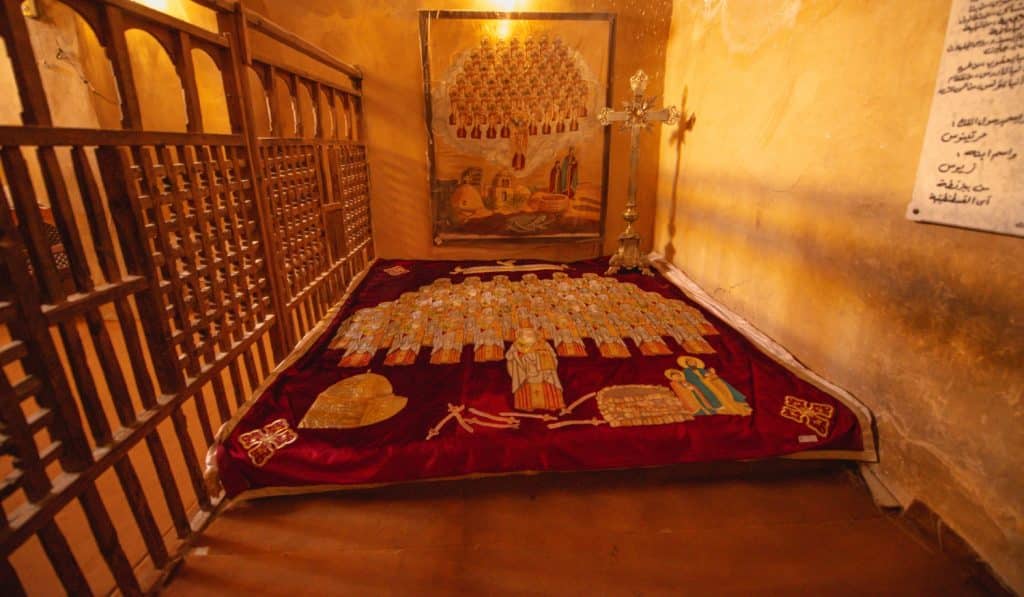 One of the characteristics that have always accompanied the Coptic Church throughout history is her being a “Church of Martyrs,” in the sense that she always has been a witness of Christ to the point of bloodshed. Even to this day, the Alexandrian Church remains a martyr church. The chronicles of recent years tell us about this suffering. This is why the Copts affectionately call their Church Umm al-šuhadā’, the “Mother of martyrs.” Starting in the third century, the persecutions and discrimination against Coptic Christians have practically never stopped. Probably, the persecution which was historically the most dramatic and which reaped a large number of martyrs took place in the era of the Emperor Diocletian (284-305). This terrible era has had such an effect that the Coptic Church begins her calendar, called the “martyrs’ calendar,” on August 29 (Julian calendar) 284, the date of beginning of Diocletian’s Empire. With the introduction of the Gregorian calendar of the Coptic, the feast of the Coptic New Year (Nayrūz) shifted to what corresponds to September 11th.
One of the characteristics that have always accompanied the Coptic Church throughout history is her being a “Church of Martyrs,” in the sense that she always has been a witness of Christ to the point of bloodshed. Even to this day, the Alexandrian Church remains a martyr church. The chronicles of recent years tell us about this suffering. This is why the Copts affectionately call their Church Umm al-šuhadā’, the “Mother of martyrs.” Starting in the third century, the persecutions and discrimination against Coptic Christians have practically never stopped. Probably, the persecution which was historically the most dramatic and which reaped a large number of martyrs took place in the era of the Emperor Diocletian (284-305). This terrible era has had such an effect that the Coptic Church begins her calendar, called the “martyrs’ calendar,” on August 29 (Julian calendar) 284, the date of beginning of Diocletian’s Empire. With the introduction of the Gregorian calendar of the Coptic, the feast of the Coptic New Year (Nayrūz) shifted to what corresponds to September 11th.
The Cradle of Monasticism
 World Christian Monasticism’s cradle is in Egypt. It can be said that undoubtedly the most important gift of the Egyptian Church to the Christian world is monasticism and Desert Fathers.
World Christian Monasticism’s cradle is in Egypt. It can be said that undoubtedly the most important gift of the Egyptian Church to the Christian world is monasticism and Desert Fathers.
There are many examples of Egyptian proto-monasticism. For instance, in the same years in which the foundations of the Church of Alexandria were laid, the Alexandrian Jewish philosopher Philo described, in his “The Contemplative Life,” a Jewish community of ascetics, called the Therapeutae, which Eusebius of Caesarea considered Judeo-Christian, who lived around the lake Mareotis (in Arabic Maryūṭ), near Alexandria, in asceticism and chastity, practicing constant meditation of the Scriptures.
In Alexandria there existed an environment, such as the Didaskaleion, led by Origen, where the master lived in a community with the disciples with whom Scriptures were studied and deepened in an atmosphere of prayer and asceticism.
St. Athanasius biography itself shows that forms of proto-monastic hermitage existed in his time. St. Athanasius writes in the biography of Abba Anthony that the latter tried at the beginning to be taught by men who already practiced the life of solitude outside the town.[11] One of these hermits prior to Anthony is even known by name, thanks to St. Jerome’s work, “Life of St. Paul”: St. Paul of Thebes (234-347). Known as the “anchorite,” he is much revered by Copts. He was a member of a wealthy and educated family who fled very young in the desert during the persecution of Decius.
However, it is undeniable that the first to have given precise features to monasticism, attracting around him a large number of disciples, was certainly St. Anthony, and a little later, St. Pachomius and St. Macarius the Great, despite in different forms.
***


